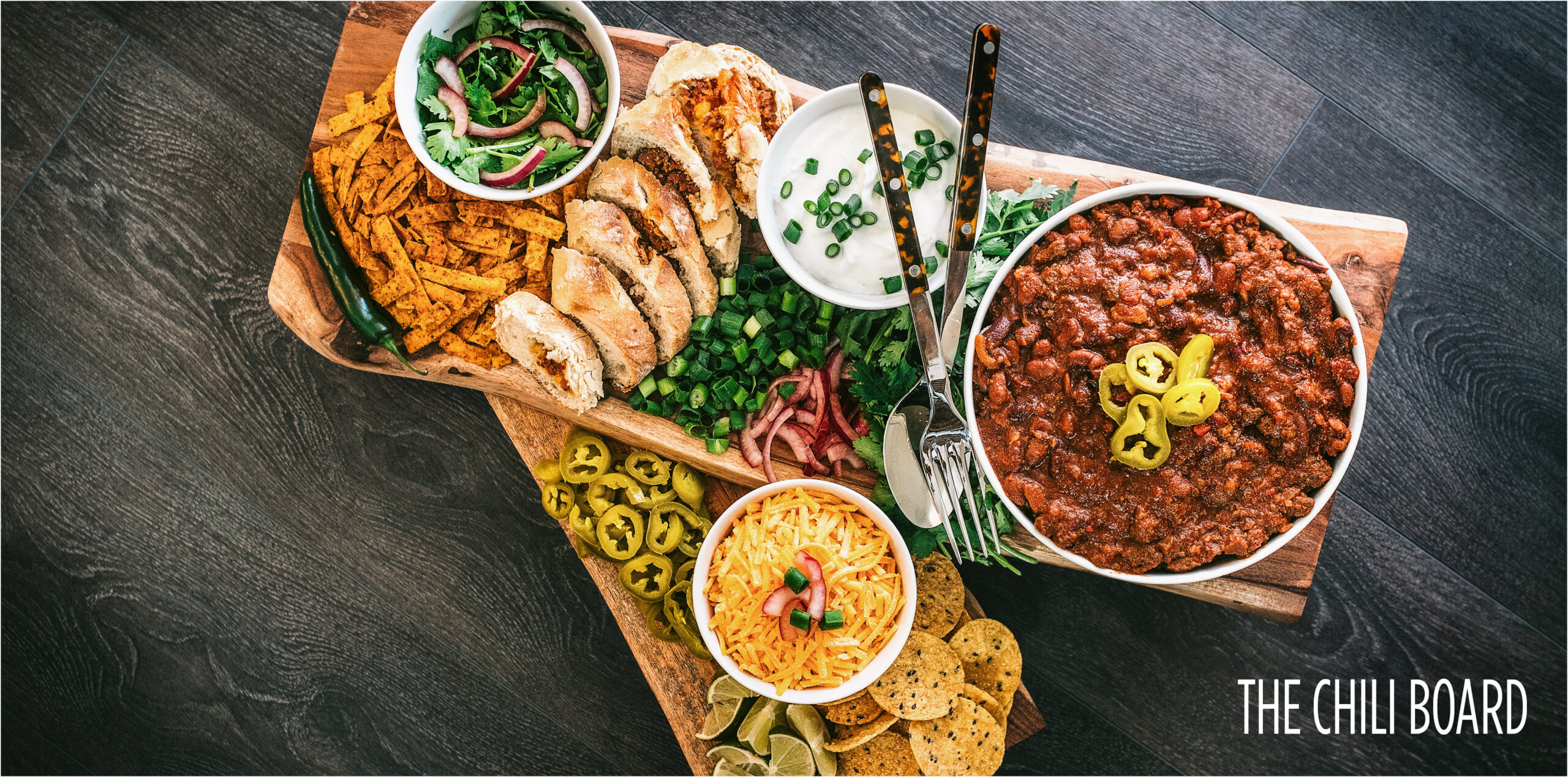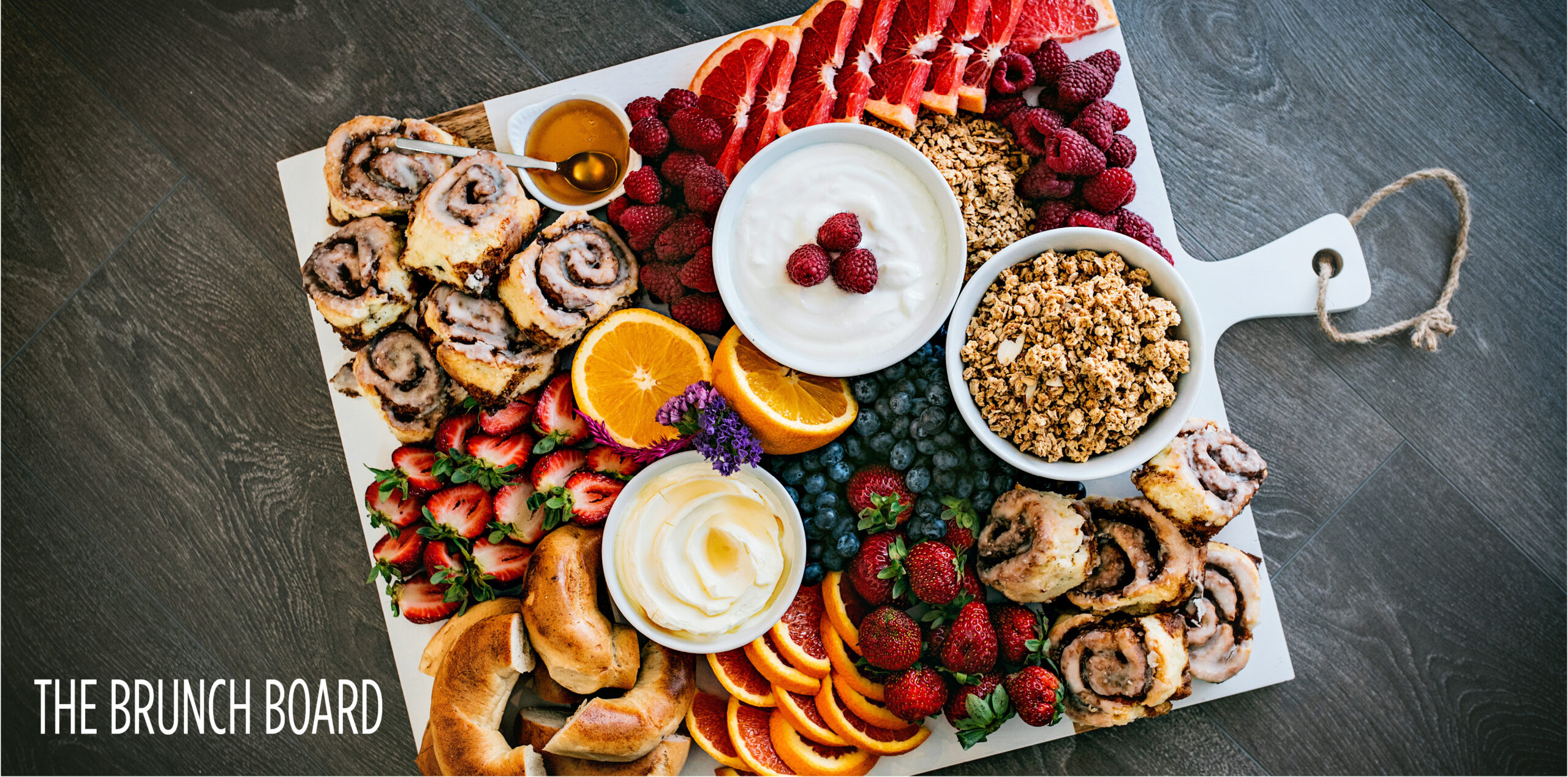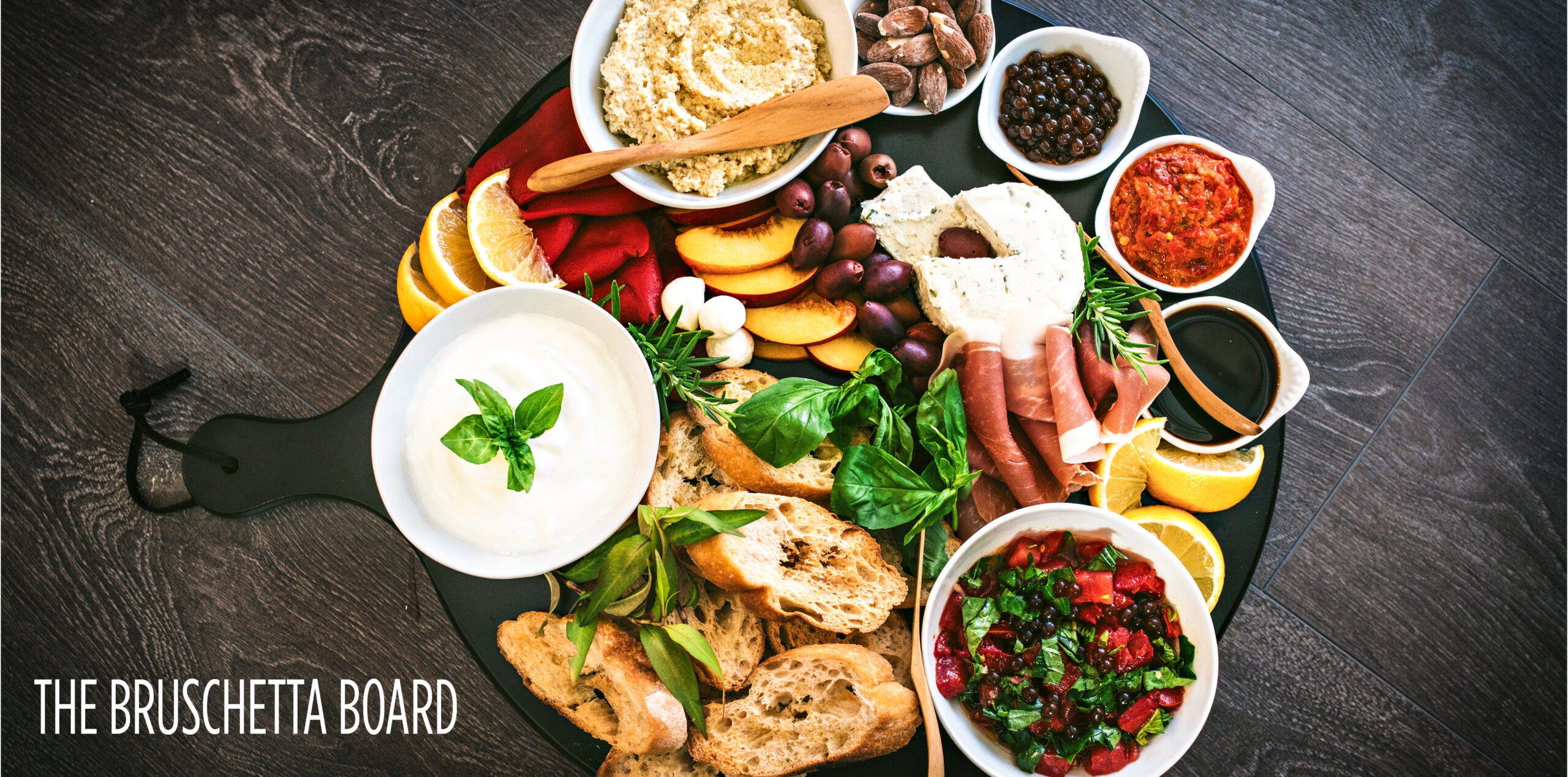story by Paul Chambers & Janice Guimond, Davidson Chambers | photos by Janis Jean Photography –
What comes to mind when you think of a charcuterie board? Is it a grand wooden board with an enticing array of cheese, crackers, cured meats and fruit, all looking so tempting? Times have changed and boards have transformed into “Sharing Boards.” Perfect for presenting everything from a full meal to appetizers and beverages, the possibilities are endless.
First a little board background! The traditional board – this is what you expect when you see a board. All the elements are arranged to present everything like a mosaic. Then you have the buffet board – more interactive with lots of little dishes filled with toppings to build your own meal. Finally, the spread, when the board needs to have friends to keep it company – two or more boards that all work together with lots of options.
The Chili Board
As the weather cools, heartier meals take centre stage. Enter the chili board, a perfect example of a buffet and a spreading board. It expanded into two boards, using an array of small dishes to showcase grated cheeses, diced onions and tomatoes, some cilantro, nacho chips/tortilla strips and don’t forget the sour cream! The options for chili toppings are as creative as you desire. Pairing it with warm cheese garlic loaf, cornbread or thick slices of Texas toast adds an extra layer to your board. This setup is great for a family dinner or casual get together with friends. Whether you’re hosting a large gathering or a smaller group, it will please everyone.
The Brunch Board
We created a board that would be great for a gathering or for the family on a weekend. This option has endless possibilities, with hot and cold foods, some pre-made and others cooked closer to serving time. Think bagels with cream cheese, homemade cinnamon rolls, yogurt with granola and berries to make personalized parfaits, along with an assortment of fresh fruit. The brunch board is remarkably straightforward to put together, with many items readily available at your local grocery store. Things to consider adding to your brunch board can be breakfast meats, hash brown patties, scrambled eggs in a stunning serving dish and don’t forget the beverages … who can resist a mimosa?
The Bruschetta Board
The focus shifts to an assortment of smaller dishes for our bruschetta board, starting with great toasted bread as the base. The carefully selected toppings were endless and worked best in these little round dishes scattered about the board. We featured our Cucina and Amore Red Pepper/Artichoke Bruschetta and Belazu Truffle/Artichoke Tapenade to help with the prep work. Add in some roasted red peppers, nuts, pesto and balsamic vinegar to drizzle on prosciutto and complement with creamy whipped feta and flavourful Boursin Cheese. No shortage of additions to include – think melon, artichoke hearts, parmesan or mozzarella, caramelized onions and more.
Remember, crafting a sharing board is not a complex endeavor. It’s about deconstructing the meal, arranging it in piles or little bowls/dishes and adorning it with simple garnishes like basil, cilantro or parsley. For those seeking guidance, there are some invaluable resources like Around the Board, The Cheese Board Deck and That Cheese Plate Wants to Party, which offer step-by-step instructions, recipes and handy shopping lists.
For more information, visit www.davidsonchambers.com.
Wine Pairings by Tilar J. Mazzeo
Brunch Board Pairings – How you’ll pair wines with your Brunch Board will depend on whether you’re taking this in the creamy dairy and sweet baked goods direction or a classic bagels and lox direction – or both. Foods with sweetness want to be balanced with something crisp, and foods with dairy don’t need more lactic acid, so steer clear of buttery chardonnay here. They will be too much of a muchness. Look instead for a dry, crisp Provencal rosé, a cool-climate sauvignon blanc, or, of course, brut sparkling wine is always appropriate. If you’re going the lox and capers direction, the advice is the opposite: look for something with a bit of sweetness and a heavier mouth-feel in the wine, to help cut the acidity. Now that buttery chardonnay comes into its own, and you’d want to look at a warmer-climate sauvignon blanc. If you’re mixing up mimosas, nothing beats fresh-squeezed juice, but if that’s giving you sticker shock, here’s a bartender trick: make a citrus stock by boiling and straining the used rinds to extract the essential oils.
Chili Board Pairings – For foods with spice, whether it’s a chili board or take-out, look for medium-bodied white wines with bright but subdued acidity and a bit of residual sugar. A bit of sweetness takes away the sharp bite of spices and highlights their complexity. Riesling and gewurztraminer are good bets and come in at an entertaining-friendly price point and are easy to source locally; if you want something a bit special, look for sweet Spanish wines from Málaga, especially those made with Pedro Ximénez and moscatel grapes, or try a sherry pairing. If you need to go red, go for something light bodied with fresh fruit aromatics, something like a Spanish garnacha (French grenache) or a local B.C. gamay noir.
Bruschetta Board Pairings – In northern Italy, the classic bruschetta pairing is vermentino. It’s a dry, medium-bodied white wine, and it can pick up aromatics of citrus, stone and green olive that make something as simple as Tuscan bread and olive oil come alive. If you’re looking for a red wine, head in the direction of sangiovese. While it’s the backbone of chianti (and that’s an option), I’m a fan of 100% sangiovese, with its cherry and leather notes. Locally, my strong option is that hybrid varietals like marechal foch don’t make a cellar-worthy wine, but they do make a simple, rustic, bright “peasant-style” red that is actually a great pairing here.






